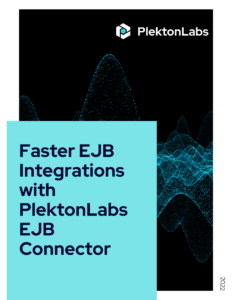Anyone who creates applications or software knows that issues in performance can be disastrous if left unaddressed. APIs are no different. An API product with a clunky performance can be insidious, causing developers to flee and chasing off potential customers.
More importantly, they increase operational costs and can cause your business to hemorrhage money. On top of all that, the creator or owner of said API ends up with a lot of anxiety while dealing with angry customers.
One of the biggest issues is lagging or slow response. The world needs instant gratification and fast results so they tend to reject any application that is slow, lags, or takes a long time to load. Moreover, if any sort of delay lasts over three seconds, nearly half the customers will either exit the application and or uninstall it from their device altogether.
API problems don’t tend to vanish overnight and you can’t rely on shortcuts to get the issue fixed. Instead, you have to identify the source of the problem and address it head-on. Sometimes, these issues aren’t easy to figure out or correct. While you’re still looking for the root of the problem, here are a few things you can do to improve its performance in the meantime.
1. Include Caching Whenever Necessary: Caching is important, especially if your customer demographics tend to stay constant. If it is possible, cache the entire endpoint response. If your backend is carrying out a time-consuming task to collect data, consider using cache there so you don’t have to perform that expensive task every single time.
This way you only have to execute it when you believe that an acceptable amount of time has passed and the time-consuming task has to be performed again to keep the data updated. In other words, adding a caching policy reduces the capacity bottleneck of the Customer database by reducing the number of calls.


2. Use Connection Pooling: Connecting to the database through the use of connection pooling also saves you a lot of time. This time would otherwise be spent on creating and closing a database connection. They maintain a cache of database connections so that those connections can be reused in case of any future requests. This cuts down on the time taken to make a connection to the database.
Connection pools have other benefits as well. They lower the number of stale connections, limit the resources used on maintaining connections, and also encourages reusing the connection object.
3. Breakdown APIs into Microservices: Sometimes a vast and monolithic API can be broken down into smaller microservices. Companies that use microservices are known to be much faster, more resilient, and a lot more resilient than the ones that don’t. Moreover, applications rooted in microservices are easier to scale and take less effort to develop.
Splitting a Monolith into different microservices takes time and should be done gradually. Refactoring everything at the same time is difficult and impossible to do correctly so breaking it into steps is important. Also, it is important to remember that microservices require a lot more automation.


4. Make Synchronous APIs: Synchronous APIs are the application programming interfaces that return data for requests either immediately. These APIs provide a way to make instant or scheduled requests for data or services when available.
The synchronous nature of an API depends on the time frame from the request to the return of data. With synchronous APIs, there is an expectation that there will be an immediate return of data. The application requests data and then waits for it until a value is returned. A synchronous API comes in handy when a high data/service/resource and connectivity and low latency are required.
5. Use Asynchronous Error-logging: Switching to asynchronous error-logging removes the wait time needed for logging. Asynchronous error-logging performs two actions asynchronously; it inserts a record of the error in the database and also registers the request to your applications. The errors are kept in a message queue and then inserted into the database in bulk after a short period of time.
In fact, Plekton Labs has introduced an Error Handling Framework that you can use with any Mule application.

The Importance of Constant Monitoring
Keeping an eye on the performance of the API product in its early days is important because it lets you get a head start on issues and the process of getting them right. Constantly monitoring the API product’s performance to gain an insight into its functionality, performance, integration, and user interface at an earlier stage is much better than noticing any defects after customers encounter major problems.
Wondering what other problems an API might face? Find out what they are and how you can correct them here.




